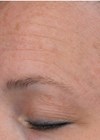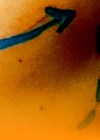To start the second part (see also Definitions, regulations and a review of the market and Skin anatomy and photoageing and Focus on: Cosmeceuticals (part 2) - continued) of this special focus on cosmeceuticals the authors will present some of the major classes of common ingredients used to enhance skin appearance (e.g. retinoids, hydroxyacids, vitamin B3 and antioxidants) within cosmetic products. In the following section, consultant dermatologist Dr Sandeep Cliff will give a personal review of the cosmeceuticals he uses within his aesthetic dermatology practice.
Retinoids
Different forms of vitamin A are used in cosmetic products, in particular retinol, retinyl esters (e.g. the acetate, propionate, palmitate and retinoate esters of retinol) and retinaldehyde. Trans-retinoic acid is a prescription retinoid with substantial clinical evidence to treat the signs of ageing.
All other retinoids are postulated to have similar clinical effects as trans-retinoic acid after significant penetration and conversion in the epidermis [1]. Histological studies have shown that topical application of trans-retinoic acid increases: 1) the amount of collagen types I and III within photo-aged dermis; 2) the number of collagen VII anchoring fibrils at the dermo-epidermal junction (DEJ); and 3) both the expression of fibrillin-1 and the amount of immunopositive staining for fibrillin-rich-microfibrils at the DEJ [2]. It has also been demonstrated that trans-retinoic acid reduces the expression of tyrosinase and enhances epidermal cell turnover. It also induces extracellular matrix (ECM) deposition through both the upregulation of ECM protein transcription and the inhibition of matrix metalloproteinase transcription, which results in dermal repair [2-5].
Topical doses of less than 1% are typically sufficient to obtain significant effects with retinoids. The first concern with retinoids is related to their potential to cause skin irritation. Choice of retinoid can reduce this issue. Irritation may also be mitigated to some extent by the formulation used. The second key concern is instability of retinoids, especially in the presence of oxygen and light, which requires special consideration during the product development process [1,6]. Trans-retinoic acid may also be used as a positive control in clinical trials to assess the efficacy of new topical active compounds [4]. Clinical studies have been published on other retinoids, such as retinol, retinaldehyde, retinyl retinoate and retinyl palmitate [3,4,7-10].
Hydroxyacids
These include: 1) α-hydroxyacids (AHAs) such as glycolic, malic, tartaric, citric, mandelic and lactic acids; 2) β-hydroxy acids (BHAs) such as salicylic acid and alkyl derivatives of it (capryoyl salicylic acid); 3) polyhydroxy acids (PHAs) such as gluconolactone and gluconoheptonolactone; and 4) bionic PHAs such as lactobionic and maltobionic acids [1,6]. A mechanism of action of these acids involves exfoliation of the stratum corneum, most likely by chelation of the calcium involved in cell-cell cohesion [1]. AHAs are beneficial to reduce the signs of photo-aged skin by reducing the stratum corneum thickness, normalising the cohesion of the stratum corneum and inducing epidermal and dermal thickening by upregulation of the ECM transcription. PHAs and bionic acids provide some additional benefits in comparison to AHAs, such as a lower irritation potential and a higher tolerance on clinically sensitive skin [11,12]. It has also been demonstrated that PHAs are more hygroscopic [12], enhance the stratum corneum barrier efficiency and do not cause skin photosensitivity in comparison to AHAs [13-15].
Efficacy of topical formulations containing hydroxyacids is proportional to the bioavailable concentration of the acid in an optimal vehicle. The bioavailability of the hydroxyacids significantly decreases when the pH is raised, as only the free acid can penetrate into and through the stratum corneum [16]. High concentrations at low pH of hydroxyacids, such as AHAs and BHAs can lead to irritation and potential skin sensitivity [17,18], which could be avoided with a controlled-release mechanism in the formulation.
Vitamin B3
Nicotinic acid (or niacin) and niacinamide (or nicotinamide) are similarly effective as a vitamin as they can be converted into each other within the organism. Niacinamide readily penetrates the stratum corneum and topical application of niacinamide enhances the stratum corneum barrier function by stimulating the ceramide synthesis and stimulating differentiation of keratinocytes which leads to a thicker stratum corneum [3,19]. It also raises the intracellular nicotinamide adenine dinucleotide phosphate levels, which have potent antioxidant properties [19]. Topical application of niacinamide is well tolerated by the skin and clinical trials have revealed beneficial effects in ageing skin [1,3]. It has been well-documented that topical niacinamide can improve epidermal barrier properties, decrease skin hyperpigmentation, reduce the appearance of fine lines and wrinkles and improve skin elasticity [1,3,19-21].
Antioxidants
Topical antioxidants can be divided into two categories: 1) water soluble, such as ascorbic acid, resveratrol; 2) oil soluble, such as α-tocopherol and ubiquinone; and 3) both water and oil soluble, such as alpha lipoic acid [6]. Antioxidants can also be classified based on their mechanism of action. Other ingredients, such as PHAs (including bionic acids) and niacinamide have also demonstrated antioxidant properties [15, 22-24]. In human skin, antioxidant capacity of the epidermis is much higher than that of the dermis and declines with age, resulting in oxidative stress [5]. Oxidative stress can be described as a condition in which the cellular antioxidant systems are insufficient to keep the level of reactive oxygen species (ROS) below a toxic threshold. This may be either due to an overproduction of ROS or to a failure of cell buffering mechanisms [25]. Topical antioxidant supplementation is a challenging option as claims from specific antioxidant should be supported by evidence of the finished product instead of the individual ingredients. Formulations with antioxidants should be tested during manufacturing and storage, as antioxidant can be consumed by free radicals generated from irradiation or environmental factors which may result in no antioxidant left when the product is used by consumers [26].
Numerous studies have been published on ascorbic acid and its essential role in neutralising free radicals and collagen biosynthesis [1,5,6]. However, it is an unstable molecule and oxidises immediately upon exposure to UV light and air. This is accompanied by rapid product yellowing. Despite different stabilisation strategies to address this issue, such as chemical modification of ascorbic acid, oxygen-impermeable packaging, encapsulation, low pH and incorporation of other antioxidants, it remains a challenge to ensure stability [1,5,27,28]. Derivatives of other antioxidants have been shown to be more stable than the active forms; however, there is doubt as to their clinical efficacy [1,2].
In conclusion, cosmetic skincare formulations are becoming more complex and manufacturers should not only address the sensory aspects that consumers desire, but also maximise the performance of the formulation by maintaining the integrity of the active compound and ensuring maximum bioavailability at the target site [2]. It is also critical for the functionality of the cosmetic product, that the combination of different ingredients is compatible with each other as well as with the packaging [2,16]. Trained healthcare and beauty professionals (including aesthetic physicians, dermatologists, pharmacists, aesthetic / beauty therapists) need to understand what cosmetic products are and how these can provide benefits to the consumer / patient. A more proactive approach to skincare is also needed to maintain a healthy skin (including UV protection) as opposed to just focusing on reducing the appearance of signs of ageing. These professionals are also in a key position to increase awareness and educate consumers / patients about the importance of an appropriate daily skincare regimen to improve skin’s appearance and texture and to maintain its protective function, as well as to maximise benefit of in-office aesthetic procedures [29].
Acknowledgements
The authors greatly appreciate the suggestions provided by Steve Barton (Skin Biologist, Skin Thinking Ltd, UK), Yvonne Mills (Course Leader Aesthetic Therapist, University of the Arts, London) and Caroline Searing (Course Leader, BSc Beauty and Spa Management, University of the Arts London). Our apologies to all researchers in this area whose publications we did not cite in this overview. This is only a selection of the many publications available in the literature.
References
1. Bissett D. Common cosmeceuticals. Clinics in Dermatology 2009;27:435-45.
2. Bradley EJ, Griffiths CE, Sherratt MJ, et al. Over-the-counter anti-ageing topical agents and their ability to protect and repair photoaged skin. Maturitas 2015;80:265-72.
3. Levin J, Del Rosso J, Momin S. How much do we really know about our favourite cosmeceutical ingredients? J Clin Aesthet Dermatol 2010;3(2):22-41.
4. Lorencini M, Brohem CA, Dieamant GC, et al. Active ingredients against human epidermal ageing. Ageing Research Reviews, 2015;15:100-15.
5. Pilkington S, Belden S, Miller R. The tricky tear through – a review of topical cosmeceuticals for periorbital skin rejuvenation. J Clin Aesthet Dermatol 2015;8(9):39-47.
6. Ramos-e-Silva M, Ribeiro Celem L, Stella Ramos-e-Silva S, Fucci-da-Costa A. Anti-aging cosmetics: Facts and controversies. Clinics in Dermatology 2013;31:750-8.
7. Creidi P, Vienne MP, Ochonisky S, et al. Profilometric evaluation of photodamage after topical retinaldehyde and retinoic acid treatment. J Am Acad Dermatol 1999;6(39):960-5.
8. Sorg O, Kuenzli S, Kaya G, Saurat J. Proposed mechanisms of action for retinoid derivatives in the treatment of skin aging. Journal of Cosmetic Dermatology 2005:4;237-44.
9. Mukherjee S, Date A, Patravale V, et al. Retinoids in the treatment of skin aging: an overview of clinical efficacy and safety. Clinical Interventions in Aging 2006;4(1):327-48.
10. Kim H, Koh J, Baek J, et al. Retinyl retinoate, a novel hybrid vitamin derivative, improves photoaged skin: a double-blind, randomized-controlled trial. Skin Res Technol 2011;17:380-5.
11. Green B, Edison B, Sigler M. Antiaging effects of topical lactobionic acid: results of a controlled usage study. Cosmet Dermatol 2008;21(2):76-82.
12. Green B, Wildnauer R, Edison B. Lactobionic Acid - A Novel Polyhydroxy Bionic Acid for Skincare. San Francisco, Amer Acad of Derm Poster Exhibit; 2000.
13. Berardesca E, Distante F, Vignoli GP, et al. Alpha hydroxyacids modulate stratum corneum barrier function. British J Dermatol 1997;137:934-8.
14. Green B, Edison B, Wildnauer R. Polyhydroxy acids (PHAs) provide conditioning effects to skin without increasing sensitivity to UV light. New Orleans, Amer Acad of Derm Poster Exhibit; 2002.
15. Bernstein E, Brown DB, Schwartz MD, et al. The polyhydroxy acid gluconolactone protects against ultraviolet radiation in an in vitro model of cutaneous photoageing. Dermatologic Surgery 2004;30:1-8.
16. Bordat P, Chesnoy S. Mixing glycolic acid with retinaldehyde: a technical achievement. Dermatology 2005;210(Suppl 1):2-5.
17. Andersen F. Final report on the safety assessment of glycolic acid, ammonium, calcium, potassium, and sodium glycolates, methyl, ethyl, propyl, and butyl glycolates, and lactic acid, ammonium, calcium, potassium, sodium, and TEA-lactates, methyl, ethyl, isopropyl, an. Int J Toxicol 1998;17(Suppl 1):1-241.
18. CIR. Safety Assessment of Alpha Hydroxy Acids as Used in Cosmetics. 2013.
19. Gehring Z. Nicotinic acid / niacinamide and the skin. J Cosmet Dermatol, 2004;3:88-93.
20. Bissett DL, Miyamoto K, Sun P, et al. Topical niacinamide reduces yellowing, wrinkling, red blotchiness, and hyperpigmented spots in aging facial skin. Int J Cosmet Sci 2004;26:231-8.
21. Bissett D, Oblong J, Berge, C. Niacinamide: A B vitamin that improves aging facial skin appearance. Dermatol Surg 2005;31:860-5.
22. Van Scott E, Yu R. Bioavailability of alpha-hydroxyacids in topical formulations. Cosmetic Dermatology 1996;9(6):54-62.
23. Yu R, Van Scott E. Alpha-hydroxyacids: science and therapeutic use. Cosmetic Dermatology Supplement 1994;1-6.
24. Charloux C, Paul M, Loisance D, Astier A. Inhibitio of hydroxyl radical production by lactobionate, adenine and tempol. Free Radical Bio & Med 1995;19(5):699-704.
25. Varçin M, Bentea E, Michotte Y, Sarre S. Oxidative stress in genetic mouse models of Parkinson’s disease. Oxid Med Cell Longev 2012;62:4925.
26. Knight J, Reeves J. Substantiating antioxidant claims. Cosmetic Science Technology 2010;181-90.
27. Schagen S, Vasiliki Z, Makrantonaki E, Zouboulis C. Discovering the link between nutrition and skin aging. Dermato-Endocrinology 2012;4(3):298-307.
28. McMullen R. Antioxidants and the Skin. Carol Stream: Allured Books; 2013.
29. Thornfeldt C, Krista Bourne L: Cosmeceuticals – OTC/Prescription/Professional. In: Kozlowski A (ed). New Ideal in Skin Health: Separating Fact From Fiction. Allured Books; 2010:127-39.
Further reading
- Briden M, Green B. The Next Generation Hydroxyacids. In: Draelos W, Dover J, Alam M (eds): Procedures in Cosmetic Dermatology: Cosmeceuticals. Philadelphia: Elsevier Saunders, 2005:205-12.
- Matthews I. Anti-ageing cosmeceuticals. COSSMA 2011;12:10-1.
Declaration of competing interests: None declared.





